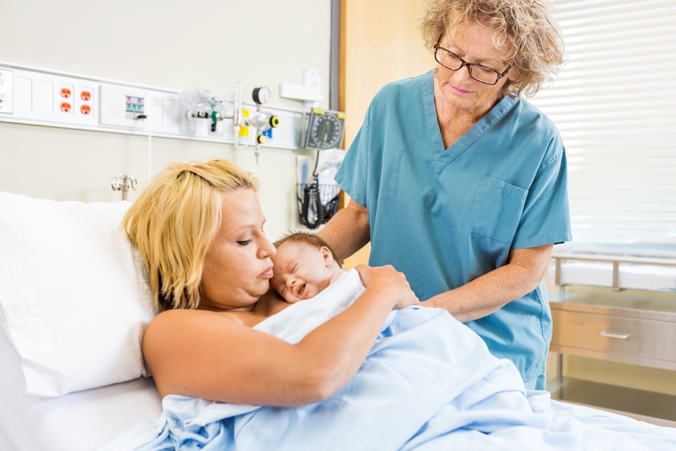Cleansing before skin-to-skin contact in NICUs reduces S. aureus infections

Skin-to-skin contact between parents and newborns — also known as kangaroo care — has been shown in studies improve children’s health and development, but it can also expose NICU patients to Staphylococcus aureus colonization and infection. A three-part intervention that included skin cleansing reduced the incidence of these infections, according to research presented at the annual conference of the Association for Professionals in Infection Control and Epidemiology, or APIC.
“Before we implemented parent skin cleansing prior to kangaroo care, our policy only called for clean, dry and intact skin,” Gwen M. Westerling, BSN, RN, CIC, an infection preventionist at Spectrum Health Helen DeVos Children’s Hospital, told Infectious Diseases in Children. “We did not ask parents directly to shower or bathe prior to kangaroo care although it was implied that a parent should be clean. Now, we have a process in place that directs parent skin cleaning right at the bedside for our most vulnerable patients.”
Westerling conducted this research after observing an increase in the number of nosocomial S. aureus infections among infants receiving NICU. Three interventions were used to reduce infection, including promoting proper hand hygiene, education of staff members regarding S. aureus and cleaning parents’ skin before allowing skin-to-skin contact with their low-birth-weight infants or infants who required a central line. Standard care was continued during this time.
The researchers tracked the number of S. aureus infections 1 year before and after applying the three interventions. They determined this number using positive clinical cultures for S. aureus, central line-associated bloodstream infections (CLABSIs) and ventilator-related infections.

Before using the intervention strategies, S. aureus infection was confirmed in 30 neonatal patients. Westerling also observed seven CLABSIs and 15 infections related to ventilator use. The intervention significantly reduced the number of infections observed in this NICU, with 15 S. aureus infections, two CLABSIs and one ventilator-related infection reported.
Additionally, education regarding cleansing of patients and families improved during the study period, with 98% of registered nurses understanding the requirements. Three-fourths of these registered nurses reported 76% to 100% compliance in these cleansing practices.
“Kangaroo care is an evidence-based intervention that has been proven to be beneficial for both mother and baby,” Westerling said. “I would advise pediatricians to continue this intervention but simply ask parents to consider cleansing their skin prior to kangaroo care. Simple hygiene can help protect babies from harmful bacteria that parents can harbor without signs and symptoms of infection.” – by Katherine Bortz
References:
Westerling GM, et al. EPOP-144: Reducing Staphylococcus aureus infections in a neonatal intensive care unit through parent skin cleansing prior to skin to skin care. Presented at: APIC 2018; June 13-15, 2018; Minneapolis.
Jeffries AL. Paediatr Child Health. 2012;17;141–143.
Disclosure: Westerling reports no relevant financial disclosures.


